Are you craving an escape into serene landscapes, where time slows down and nature speaks in whispers? If yes, then 2025 is your perfect chance to explore the most stunning nature places in India that offer peace, beauty, and inspiration all at once.
From the snow-capped Himalayas to lush green valleys, from untouched forests to sparkling lakes, India is blessed with some of the most scenic and soul-refreshing destinations in the world. Whether you’re an adventure enthusiast, a photography lover, or someone simply looking to reconnect with nature – there’s a perfect spot waiting for you.
In this blog, we’ve curated a list of the top 15 nature places in India that promise unforgettable experiences in 2025. These handpicked locations are ideal for eco-tourism, relaxation, and exploring the raw, untouched beauty of India.
🌿 So pack your bags and get ready to discover the magic of India’s natural wonders!
Table of Contents
Why Explore Nature Places in India?
The year 2025 has brought a new trend in the world of travel – people are now drawn towards peace and natural beauty, away from noise. Where earlier people liked to visit only famous tourist places, now the same people are turning towards less crowded, nature places in India.
Spending time in natural places reduces stress and improves mental health. Lush green forests, open skies and calm environment provide peace to your mind. After Covid, travelers now look for destinations where there is less crowd and the environment is clean. This is the reason why the demand for nature places in India is increasing rapidly in 2025.
Today’s conscious travelers do not just go for a walk; they also want to travel responsibly. Nature places support eco-tourism and benefit local communities.
There are many hidden nature places in India about which very few people know. These places are not only beautiful, but also give you a special experience different from the crowd.
Top 15 Nature Places in India to Visit in 2025
1.Tawang Valley, Arunachal Pradesh

Tawang Valley is one of the most stunning and untouched nature places in India, tucked away in the far northeastern corner of Arunachal Pradesh. Surrounded by snow-covered peaks, evergreen forests, and ancient monasteries, Tawang offers a rare blend of scenic beauty and spiritual calmness that every nature lover dreams of.
This serene valley sits at an altitude of over 10,000 feet and is known for its pristine landscapes, crystal-clear rivers, and the famous Tawang Monastery – one of the largest Buddhist monasteries in India. It’s an ideal offbeat destination for those who wish to escape the noise of city life and immerse themselves in raw, natural beauty.
✅ Why Visit Tawang Valley?
- Experience snow-capped mountains and tranquil surroundings
- Visit shimmering high-altitude lakes like Madhuri Lake
- Perfect for meditation, photography, and cultural exploration
- A peaceful nature getaway with less tourist crowd
📅 Best Time to Visit:
March to June (for lush greenery) or October to December (for snow lovers)
🗺️ How to Reach:
- Nearest Airport: Tezpur or Guwahati (Assam)
- From Guwahati: Drive to Tawang via Bhalukpong, Bomdila (12–14 hours)
Note: Inner Line Permit (ILP) is required for Indian tourists.
2.Valley of Flowers, Uttarakhand
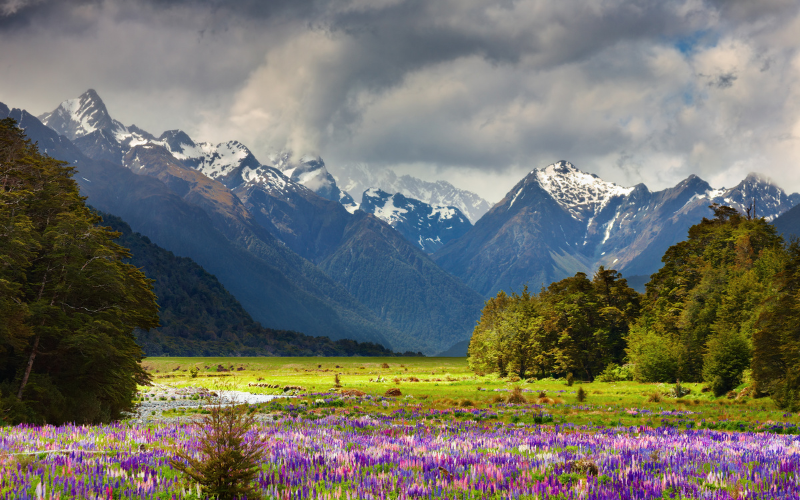
If you’re searching for the most colorful and magical nature places in India, the Valley of Flowers in Uttarakhand should be at the top of your list. Nestled in the Garhwal Himalayas, this UNESCO World Heritage Site is a spectacular high-altitude valley known for its vibrant carpets of alpine flowers, rare Himalayan flora, and snow-capped peaks in the backdrop.
Every year during the monsoon season, the valley comes alive with over 500 species of blooming flowers, making it a dream destination for trekkers, photographers, and nature lovers. The peaceful trails and fresh mountain air offer the perfect escape from modern chaos — a true nature retreat in the heart of India’s mountains.
✅ Why Visit the Valley of Flowers?
- Walk through miles of blooming meadows in vibrant colors
- Explore one of India’s most beautiful Himalayan valleys
- Perfect for eco-tourism, peaceful trekking, and botany lovers
- Visit nearby Hemkund Sahib, a serene glacial lake and pilgrimage site
📅 Best Time to Visit:
Mid-July to Mid-September (when flowers are in full bloom)
🗺️ How to Reach:
- Nearest Airport: Jolly Grant Airport, Dehradun
- Trek Route: Drive to Govindghat → Trek to Ghangaria (13 km) → Trek to Valley of Flowers (4 km)
Note: Entry is allowed only during daylight hours; permits are required.
3.Loktak Lake, Manipur
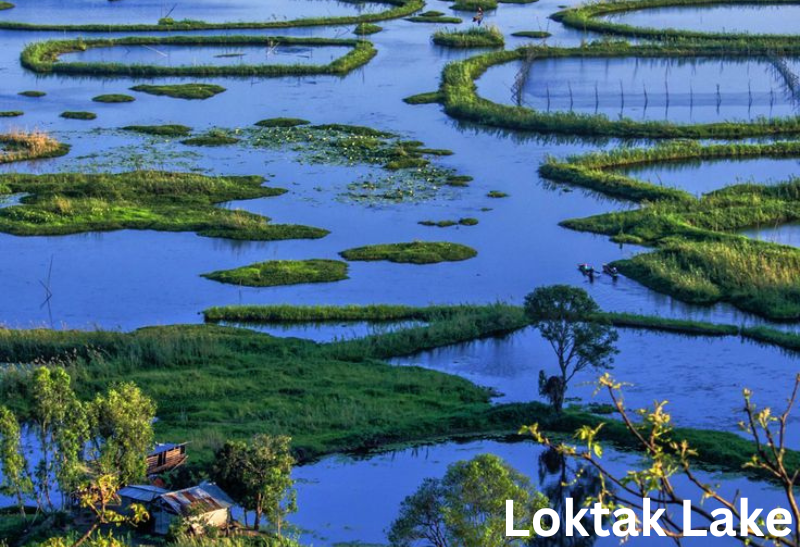
Among the most unique nature places in India, Loktak Lake in Manipur stands out with its incredible floating islands called Phumdis. Located near Imphal, this breathtaking freshwater lake is the largest in Northeast India and offers a truly surreal experience for travelers seeking offbeat natural beauty.
The floating circular patches seen all over the lake are actually biomass — home to fishermen, birds, and rare aquatic life. The sight of boats gliding between floating huts under a soft mist creates an almost dreamlike atmosphere, perfect for those longing for peaceful travel experiences and eco-tourism in a less explored part of India.
✅ Why Visit Loktak Lake?
- Witness the world’s only floating national park – Keibul Lamjao National Park
- Discover the rich biodiversity and migratory birds
- Explore an untouched corner of Northeast India
- Enjoy boating, photography, and serene lake views
📅 Best Time to Visit:
October to March (pleasant weather and clear skies)
🗺️ How to Reach:
- Nearest Airport: Imphal (approx. 40 km from the lake)
- By Road: Taxis and buses available from Imphal city
Tip: Visit early morning for the most magical views and peaceful ambiance.
4.Agumbe Rainforest, Karnataka

Hidden deep in the Western Ghats, Agumbe Rainforest is a misty paradise that captures the raw, untouched beauty of southern India. Often called the “Cherrapunji of the South”, Agumbe is one of the rainiest places in the country and a haven for biodiversity. If you’re searching for nature places in India that feel like stepping into a different world, Agumbe is it.
This small village is surrounded by dense rainforests, ancient medicinal plants, rare wildlife like the King Cobra, and sparkling waterfalls. It’s also home to India’s first automatic weather station and is part of the UNESCO World Heritage Western Ghats biosphere.
✅ Why Visit Agumbe?
- Experience the magic of an authentic Indian rainforest
- Trek to hidden waterfalls like Barkana and Onake Abbi
- Spot rare reptiles and orchids in the wild
- Ideal for nature photography, monsoon lovers, and offbeat travel seekers
📅 Best Time to Visit:
October to February (pleasant and lush post-monsoon greenery)
Note: During peak monsoon, trekking routes may be closed.
🗺️ How to Reach:
- Nearest Airport: Mangalore International Airport (approx. 100 km)
- By Road: Accessible via Shimoga or Udupi by bus or car
Tip: Stay in eco-lodges or homestays for an immersive jungle experience.
5.Ziro Valley, Arunachal Pradesh

Among the hidden gems of Northeast India, Ziro Valley stands as one of the most soulful and scenic nature places in India. Tucked away in the Eastern Himalayas, this tranquil valley is famous for its pine-covered hills, rice fields, bamboo houses, and the indigenous Apatani tribe, who have lived in harmony with nature for generations.
Ziro offers a perfect blend of natural serenity and rich cultural heritage. Whether you’re trekking through rolling green fields, watching clouds drift over the hills, or experiencing tribal music at the Ziro Music Festival, this offbeat destination gives you a break from commercial tourism and brings you closer to India’s untouched beauty.
✅ Why Visit Ziro Valley?
- Breathe in fresh mountain air in an untouched Himalayan valley
- Discover sustainable tribal culture and unique traditions
- Enjoy serene walks, birdwatching, and peaceful hill vibes
- Perfect for slow travel, writers, nature photographers, and introverts
📅 Best Time to Visit:
March to October (for pleasant weather); September (for the Ziro Music Festival)
🗺️ How to Reach:
- Nearest Airport: Lilabari (Assam), then a scenic drive to Ziro
- By Road: Reach via Itanagar or Naharlagun (shared cabs available)
Note: An Inner Line Permit (ILP) is required for Indian tourists.
6.Khajjiar, Himachal Pradesh
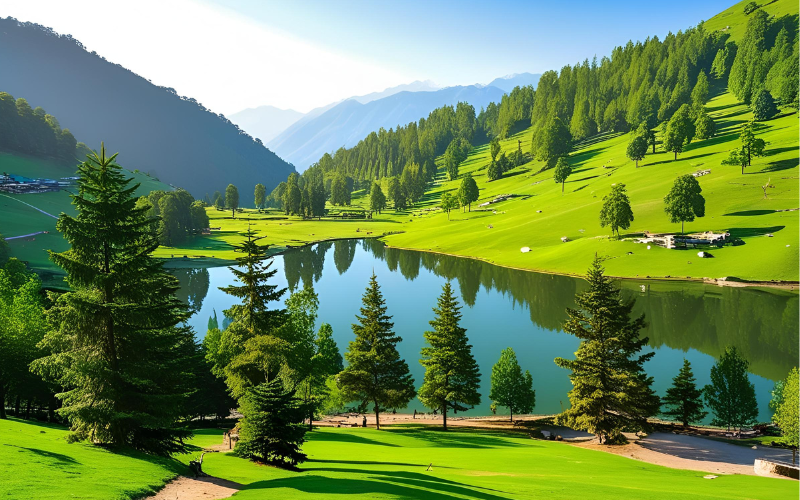
Nestled in the Chamba district of Himachal Pradesh, Khajjiar is a charming hill town that looks straight out of a fairytale. With lush green meadows, dense pine forests, and a calm reflective lake at the center, this tranquil retreat has rightly earned the title of “Mini Switzerland of India”.
Khajjiar is among the most idyllic nature places in India where you can simply sit by the lake, watch the clouds float over the mountains, and feel the cool breeze rejuvenate your soul. Its unspoiled beauty makes it ideal for couples, solo travelers, families, and especially nature lovers looking to unplug and unwind.
✅ Why Visit Khajjiar?
- Experience surreal alpine meadows without leaving India
- Walk through dense cedar and pine forests
- Enjoy adventure activities like zorbing, horse riding, and paragliding
- Ideal for peaceful getaways, photography, and short hill escapes
📅 Best Time to Visit:
March to June (for pleasant greenery); December to February (for snowfall and winter charm)
🗺️ How to Reach:
- Nearest Airport: Kangra Airport (Gaggal) – about 120 km
- By Road: Well connected from Dalhousie (22 km) via cabs or buses
Tip: Carry warm clothes even in summer; the weather can turn chilly anytime.
7.Coorg, Karnataka

Tucked away in the lush hills of the Western Ghats, Coorg (also known as Kodagu) is a green haven that blends breathtaking scenery with the sweet aroma of coffee plantations. Often referred to as the “Scotland of India”, Coorg is one of the most serene nature places in India that soothes your soul with its misty hills, waterfalls, and rolling spice gardens.
Whether you’re sipping locally grown coffee, walking through forest trails, or enjoying the gurgling sounds of Abbey Falls, Coorg offers a peaceful yet enriching nature retreat for couples, families, and solo explorers alike.
✅ Why Visit Coorg?
- Stroll through vast coffee estates under cloudy skies
- Visit waterfalls, wildlife sanctuaries, and hilltop viewpoints
- Enjoy adventure sports like river rafting in Barapole
- Great for eco-tourism, weekend getaways, and monsoon travel
📅 Best Time to Visit:
October to March (for pleasant climate); July to September (for lush monsoon greenery)
🗺️ How to Reach:
- Nearest Airport: Mangalore International Airport (about 140 km)
- By Road: Well connected from Bangalore (approx. 260 km); frequent buses and cabs available
Tip: Don’t miss local treats like pandi curry and freshly brewed filter coffee!
8.Chopta, Uttarakhand

If you’re craving a serene escape amid the Himalayas without the crowds of mainstream hill stations, Chopta is your hidden gem. Often called the Mini Switzerland of Uttarakhand, this peaceful hamlet is surrounded by dense alpine forests, rolling meadows, and snow-capped peaks that make it one of the most stunning nature places in India.
Chopta is also the starting point for the famous Tungnath Temple trek — the world’s highest Shiva temple — and the majestic Chandrashila summit, offering panoramic Himalayan views. It’s a dream destination for nature lovers, trekkers, photographers, and those looking to connect with nature in its purest form.
✅ Why Visit Chopta?
- Explore untouched Himalayan beauty far from touristy chaos
- Trek to sacred shrines and scenic mountain summits
- Enjoy camping, birdwatching, and stargazing in fresh mountain air
- Perfect for spiritual seekers, nature lovers, and solo adventurers
📅 Best Time to Visit:
March to May (for trekking and greenery); December to February (for snowfall and winter magic)
🗺️ How to Reach:
- Nearest Railway Station: Rishikesh (209 km), then taxi or shared cab
- By Road: Accessible via Ukhimath or Rudraprayag; roads are well-connected
Tip: Carry winter gear even in summer — weather can change quickly at altitude.
9.Mawlynnong, Meghalaya

Located in the pristine East Khasi Hills of Meghalaya, Mawlynnong is a picturesque village that has earned global fame as “Asia’s Cleanest Village.” Surrounded by lush greenery, blooming orchids, bamboo homes, and natural wonders, Mawlynnong is one of the most unique and peaceful nature places in India.
Here, you won’t just enjoy scenic beauty but also experience a lifestyle that’s deeply rooted in eco-conscious living. The villagers take great pride in cleanliness, rainwater harvesting, and sustainability — making it an ideal destination for eco-tourism and slow travel.
✅ Why Visit Mawlynnong?
- Witness the legendary Living Root Bridge nearby
- Explore beautifully kept gardens, treehouses, and stone pathways
- Immerse in local Khasi culture and sustainable living
- Ideal for offbeat travel, nature walks, and photography
📅 Best Time to Visit:
October to April (for pleasant weather and blooming flowers)
🗺️ How to Reach:
- Nearest Airport: Shillong Airport (about 90 km)
- By Road: Well connected by taxi from Shillong or Cherrapunji
Tip: Don’t miss the skywalk made of bamboo for a panoramic view of the Bangladesh border and lush surroundings.
10.Araku Valley, Andhra Pradesh

Nestled in the Eastern Ghats near Visakhapatnam, Araku Valley is a scenic paradise waiting to be explored. Covered with misty hills, waterfalls, and lush coffee plantations, this tranquil hill station is one of the most peaceful and underrated nature places in India.
The journey to Araku by train itself is a visual delight — passing through 50+ tunnels, forested curves, and majestic viewpoints. Whether it’s enjoying the aroma of fresh coffee, interacting with tribal communities, or visiting the Borra Caves, Araku offers a soulful escape into nature.
✅ Why Visit Araku Valley?
- Scenic hill station perfect for quiet retreats and romantic getaways
- Home to India’s only tribal-run organic coffee museum
- Explore waterfalls, caves, and local handicrafts
- Ideal for culture seekers, nature photographers, and peaceful holidays
📅 Best Time to Visit:
October to March (for pleasant weather and lush views)
🗺️ How to Reach:
- Nearest City: Visakhapatnam (115 km); well-connected by train and road
- Best Experience: Take the train ride from Vizag to Araku — one of India’s most beautiful rail journeys
Tip: Try the locally brewed Araku Coffee and explore the Padmapuram Gardens.
11.Silent Valley National Park, Kerala

Tucked away in the Nilgiri Hills of Kerala, Silent Valley National Park is one of the last undisturbed tracts of tropical rainforest in India. With its dense vegetation, rare wildlife, and absolute serenity, it stands out among the most pristine nature places in India.
Despite its name, Silent Valley is alive with the sounds of rustling leaves, exotic birds, and flowing streams. It’s part of the UNESCO-recognized Western Ghats biosphere and is a haven for endangered species like the lion-tailed macaque and Malabar giant squirrel.
✅ Why Visit Silent Valley National Park?
- Explore Kerala’s untouched rainforest ecosystem
- Spot rare flora and fauna in their natural habitat
- Ideal for eco-tourism, wildlife safaris, and birdwatching
- Experience true solitude and raw nature away from crowds
📅 Best Time to Visit:
December to April (ideal for nature walks and safaris)
🗺️ How to Reach:
- Nearest Airport/Railhead: Coimbatore (63 km away)
- By Road: Reach Mannarkkad, then take a forest jeep or guide-assisted tour
Tip: Advance permits are required from the forest department — so plan ahead for a hassle-free visit.
12.Sundarbans, West Bengal

Spread across the delta of the Ganges, Brahmaputra, and Meghna rivers, the Sundarbans is a UNESCO World Heritage Site and one of the wildest and most mysterious nature places in India. Known for its dense mangrove forests, tidal waterways, and elusive Royal Bengal Tiger, Sundarbans offers a unique blend of beauty and adventure.
This largest mangrove ecosystem in the world is home to diverse wildlife including estuarine crocodiles, spotted deer, and hundreds of bird species. A boat safari through the winding rivers of the forest is not just a journey — it’s a raw, untamed experience with nature.
✅ Why Visit Sundarbans?
- Spot the legendary Royal Bengal Tiger in its natural habitat
- Explore the world’s largest mangrove forest by boat
- Birdwatching paradise with rare migratory and resident birds
- Ideal for adventurous nature lovers and wildlife photographers
📅 Best Time to Visit:
November to March (comfortable weather and better wildlife sightings)
🗺️ How to Reach:
- Nearest Airport: Netaji Subhash Chandra Bose International Airport, Kolkata (about 100 km)
- By Road + Boat: Travel to Godkhali via Canning, then take a ferry or boat tour into the forest
Tip: Always book a licensed boat guide to explore the park safely and responsibly.
13.Spiti Valley, Himachal Pradesh

At over 12,000 feet above sea level, Spiti Valley is one of the most awe-inspiring nature places in India, offering dramatic landscapes, deep gorges, turquoise rivers, and ancient monasteries perched on rocky cliffs.
Known as the “Middle Land” between India and Tibet, Spiti mesmerizes visitors with its stark yet soulful beauty. Whether you’re driving through high-altitude passes, meditating in centuries-old monasteries like Key and Tabo, or camping under starry skies, Spiti promises an unforgettable Himalayan escape.
✅ Why Visit Spiti Valley?
- Experience surreal Himalayan desert landscapes and untouched wilderness
- Home to ancient Tibetan Buddhist culture and monasteries
- Adventure activities like trekking, river crossing, and mountain biking
- Perfect for soul-searchers, road trippers, and offbeat explorers
📅 Best Time to Visit:
May to October (roads open and weather is favorable)
🗺️ How to Reach:
- Via Manali: Reach Kaza via Kunzum Pass (open only in summer)
- Via Shimla: A longer but more accessible route via Kinnaur year-round
Tip: Acclimatize well to avoid altitude sickness and carry essential supplies in remote areas.
14.Pachmarhi, Madhya Pradesh
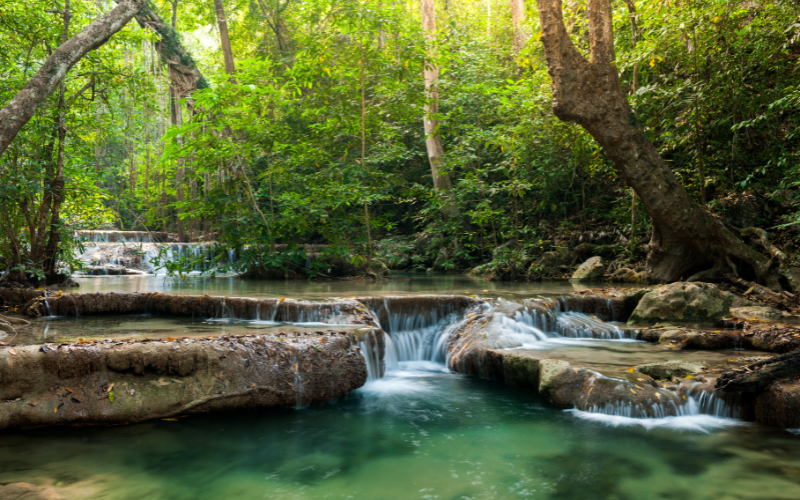
Nestled deep within the Satpura range, Pachmarhi is Madhya Pradesh’s only hill station — a refreshing oasis of peace, pine-covered hills, gushing waterfalls, and mystical caves. This lesser-known destination is truly one of the hidden nature places in India that offers a rich mix of history, spirituality, and natural charm.
Famous for its scenic viewpoints like Dhoopgarh (the highest point in MP), ancient Buddhist and Hindu caves, and stunning falls like Bee Falls and Apsara Vihar, Pachmarhi is perfect for couples, families, and solo nature lovers alike.
✅ Why Visit Pachmarhi?
- Tranquil forests and waterfalls for a perfect nature getaway
- Explore ancient rock-cut caves and temples dating back to Mahabharata era
- Enjoy hiking, cycling, and forest safaris in Satpura Tiger Reserve
- A peaceful hill station with rich mythological and tribal heritage
📅 Best Time to Visit:
October to March (pleasant weather and lush green surroundings)
🗺️ How to Reach:
- Nearest Airport: Bhopal (approx. 195 km)
- By Train: Pipariya Railway Station (approx. 50 km), then taxi or bus
Tip: Many areas fall under biosphere reserve — so eco-friendly travel is highly encouraged.
15.Darjeeling, West Bengal
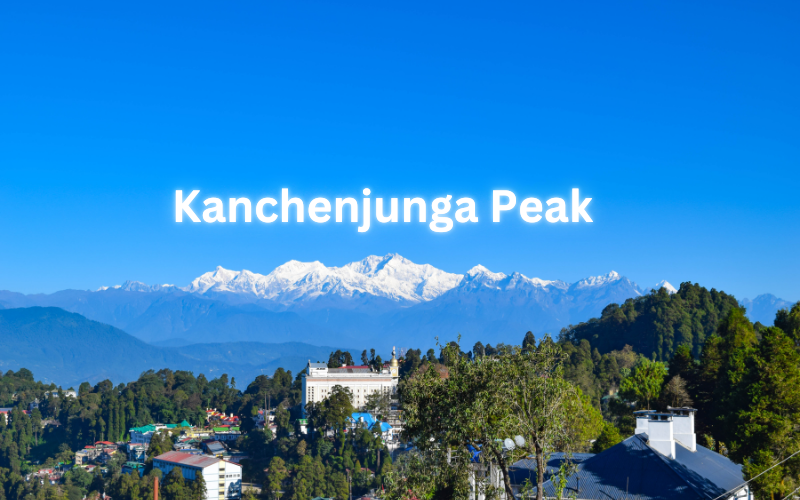
Perched on the slopes of the Eastern Himalayas, Darjeeling is a timeless classic among the best nature places in India. With sweeping views of Mount Kanchenjunga, emerald-green tea estates, and the historic Darjeeling Himalayan Railway, this destination blends colonial charm with natural elegance.
The mist-covered hills, dense forests, peaceful monasteries, and vibrant markets offer something for every kind of traveler. Whether you’re sipping hot Darjeeling tea at a plantation, catching the sunrise at Tiger Hill, or enjoying a nostalgic toy train ride, this hill station promises serenity and joy in every corner.
✅ Why Visit Darjeeling?
- Stunning Himalayan views, including majestic Kanchenjunga
- World-famous tea estates and tasting experiences
- Scenic toy train ride – a UNESCO World Heritage attraction
- Great weather, charming culture, and lush natural beauty year-round
📅 Best Time to Visit:
March to May and October to December (clear skies and pleasant weather)
🗺️ How to Reach:
- Nearest Airport: Bagdogra Airport (approx. 70 km)
- By Train: New Jalpaiguri (NJP), then take a taxi or the toy train
Tip: Book sunrise trips to Tiger Hill early, and don’t miss Batasia Loop on your way back!
Also Read: 10 Heaven Places in India
Quick Tips for Nature Travel in India
Traveling through the nature places in India isn’t just a vacation — it’s an opportunity to reconnect with the earth, learn local values, and travel responsibly. Whether you are hiking in the Himalayas or boating on a silent lake in the northeast, here are some practical and eco-conscious tips to enhance your journey:
1. ♻️ Travel the Eco-Friendly Way
Preserve the purity of India’s natural wonders by minimizing plastic use, carrying reusable essentials, and avoiding activities that harm local ecosystems. Eco-friendly travel is no longer optional — it’s essential.
2. 📅 Choose the Right Season for Each Place
Each destination has a season when its beauty truly shines. For instance, visit Spiti Valley in summer for clear skies, and explore the Sundarbans in winter to witness wildlife comfortably. Do your research before finalizing your trip.
3. 🧘♀️ Pick Offbeat & Less Crowded Destinations
Popular tourist spots often suffer from over-tourism. Instead, choose peaceful locations like Chopta, Pachmarhi, or Ziro Valley for a more intimate connection with nature and fewer crowds.
4. 🥾 Go Trekking with Local Guides
A local guide can make your trip memorable with authentic insights about the area’s biodiversity, culture, and hidden gems. Plus, you’re supporting the local economy!
5. 🍲 Embrace Local Culture & Cuisine
Stay with homestays, try traditional food, and learn about the customs of the region. This not only deepens your travel experience but also promotes sustainable and ethical tourism.
6. 🎒 Pack Nature-Friendly Travel Gear
Don’t forget essentials like reusable water bottles, eco-friendly toiletries, solar-powered chargers, and biodegradable waste bags. Travel light, but travel smart.
7. 🚯 Leave No Trace
Follow the golden rule: “Leave only footprints, take only memories.” Never litter, disturb wildlife, or damage vegetation. Let’s keep these beautiful natural places in India unspoiled for future explorers.
Conclusion: Reconnect with Nature
India is a land where every corner whispers a different story of nature — from the snow-capped peaks of the Himalayas to the rhythmic waves along its coastal shores. The nature places in India listed above are not just scenic locations; they are soulful experiences that bring peace, inspiration, and a deeper connection with the earth.
Whether you’re an adventure seeker, a calm soul yearning for solitude, or simply someone who finds joy in natural beauty — India’s diverse natural landscapes have something special for you.
Through this blog, we’ve explored both popular and lesser-known gems that deserve a spot on your travel list in 2025.
Now, it’s your turn.
📌 Plan your journey with a heart full of passion,
📌 Travel responsibly, respecting the beauty around you,
📌 And most importantly, become a guardian of nature — not just a visitor.
Let’s not just witness nature… let’s protect it — so future generations can also feel the magic of these breathtaking nature places in India.
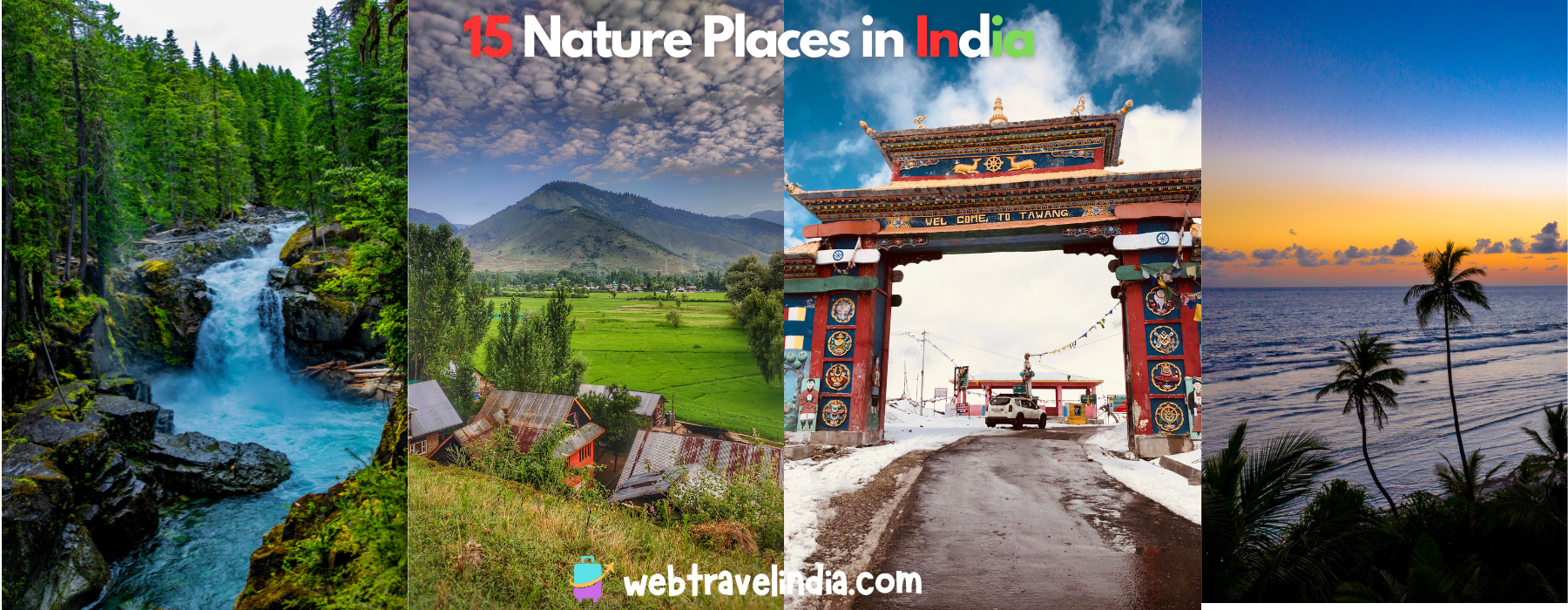
1 thought on ““15 Most Beautiful Nature Places in India to Visit in 2025 – A Perfect Guide for Nature Lovers””
Comments are closed.